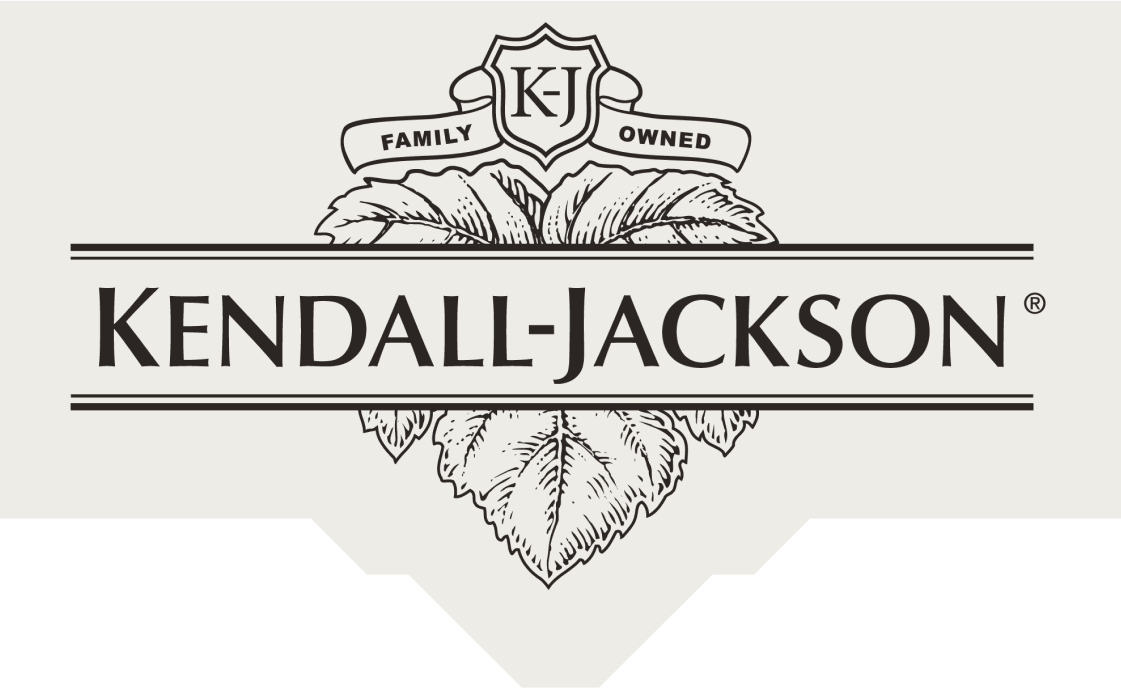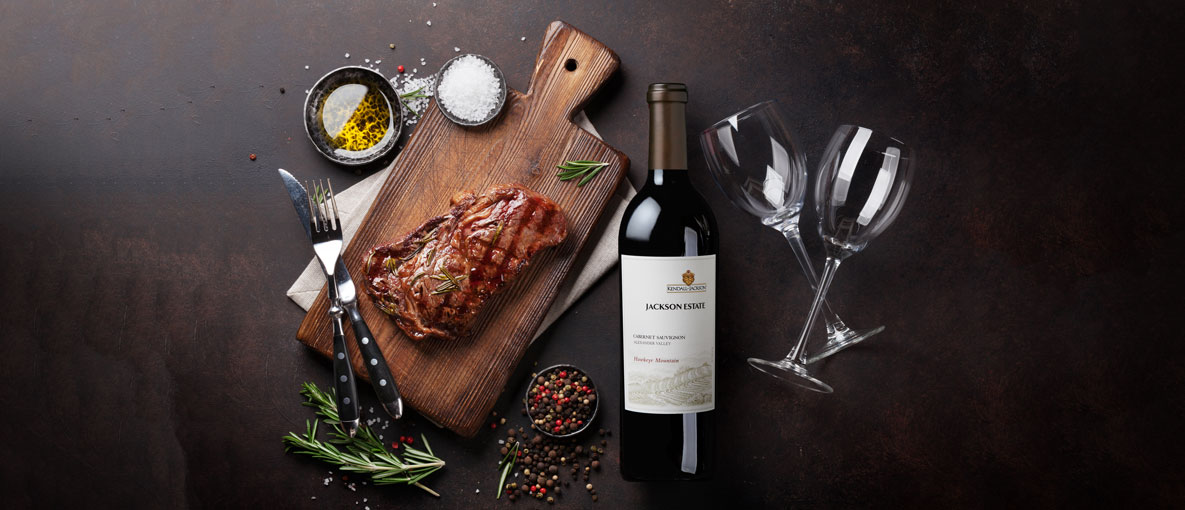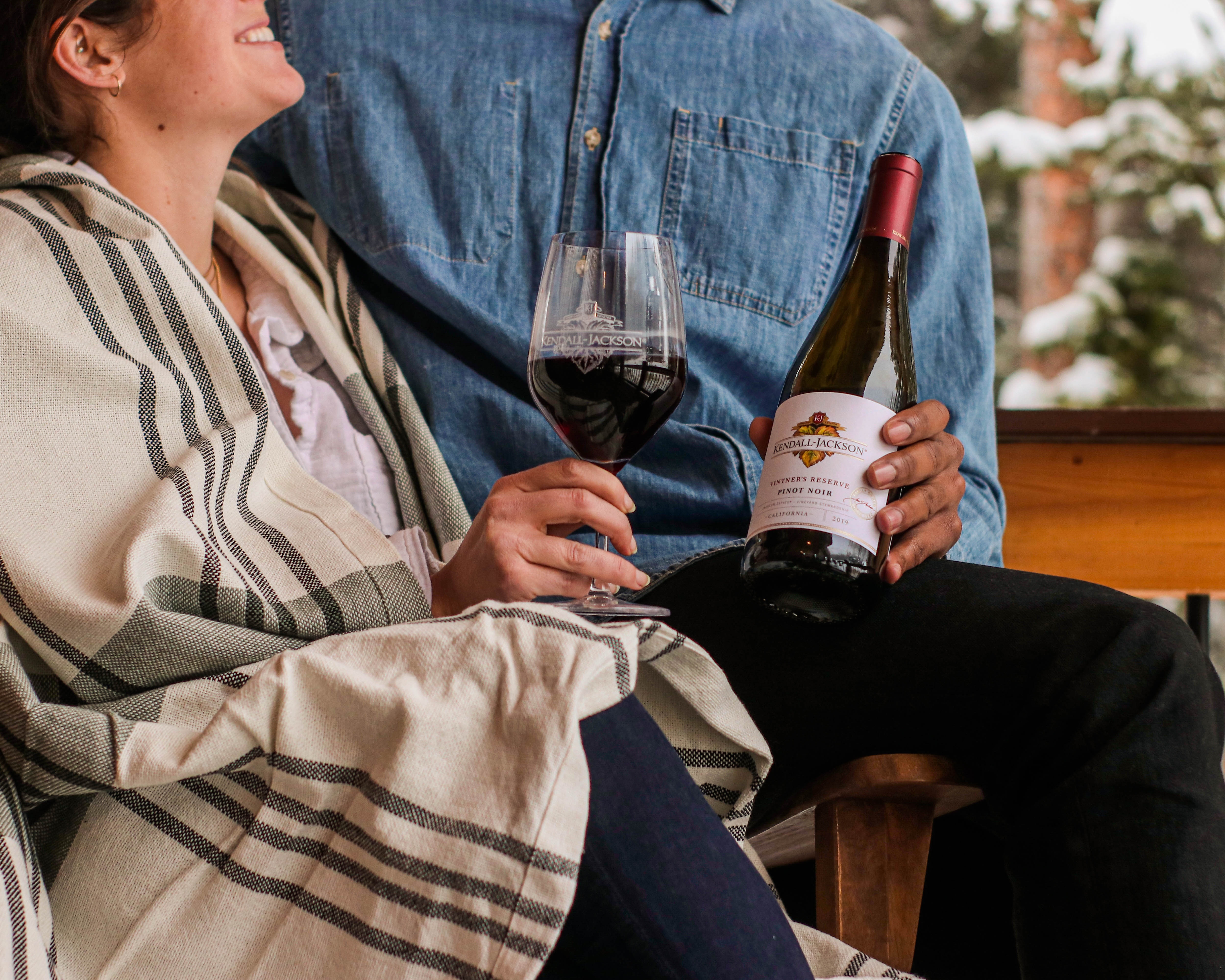Oak Barrels, Toast And Good Wine
I recently took a trip out to Missouri to visit the cooperage where all of the barrels are assembled for Kendall-Jackson wines.
Those of you familiar with my colleague Gilian’s posts on her recent visit to France are aware that Kendall-Jackson is an owner of the Merrain International stave mill in France. As a result, we are able to source our own French oak from the forests in France. There, it is milled and turned into staves. We age it on the property, out in the open air, for a period of three years on average. In the end, the aged staves are shipped to the cooperage in Missouri for finishing and barrel-building.
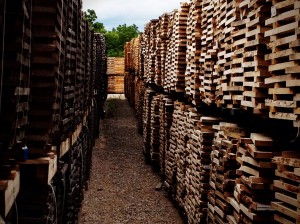
Staves Being Aged
My trip was a fantastic experience. I got to see the inner-workings of the cooperage business. From sourcing wood in the Missouri oak forests (this for American Oak barrels, of course), to the stave mill, where the freshly cut logs are turned into rough staves for aging, to the cooperage itself, where they employ state of the art technology to accurately build barrels to our specifications.
This all prompted me to think about a new blog post: What is the role of oak in winemaking?
It should come as no surprise that we use oak barrels in the winemaking making process. I have shared the details of why we blend, by selecting the barrels of wine from amongst the many different lots we produce from each vintage. But barrel-aging is more than just a frustratingly inconvenient way to store large quantities of wine until it is ready for bottling.
Barrels are used because of the way they facilitate wine aging, as well as their contribution to the complexity and mouthfeel of each wine. For structured red wines, especially, like those made from Syrah, Cabernet Sauvignon or other Bordeaux grapes, the barrel environment plays a significant part in how the wine matures and softens over time.
The barrel is not a hermetically sealed vessel, rather, because of the structure of the wood itself, it allows small amounts of oxygen to permeate across the barrel staves and diffuse into the wine. The reactions that take place as a result of these micro quantities of oxygen promote softening of the tannins and formation of stable color.
Indulge me as I dive into the really geeky stuff for a paragraph or so:
We choose specific barrels because of the organoleptic contribution they bring to the wine. The contact with the fire-bent and toasted oak brings a host of flavors and mouthfeel. The primary structural component of all plant material is called cellulose. This polysaccharide is produced in all plants from individual molecules of the reducing sugar we call glucose. Trees also produce structural cell-wall materials called hemicellulose and lignin. When those are exposed to heat they break down into individual molecules and eventually can be converted into volatile compounds that we can smell, such as vanillin and furfural that are responsible for the vanilla and toasted nut aromas we find in oak-aged wines. Further toasting produces compounds associated with smoke: cresol, guaiacol, and eugenol.
In my latest post on the subject of tannins I mentioned oak as a source of tannin in wine. Wood tannins from the oak do leach into the wine aged in barrels. French oak in particular can have considerable impact on the mouthfeel of the aged wine due to its tannin content. I select particular barrels because of this impact, and I use it as a component in my wine blends. Sometimes though, we do not want significant tannin impact from the oak. By extensively toasting the barrel at higher heat for long periods of time, we break down the tannin and eliminate it.
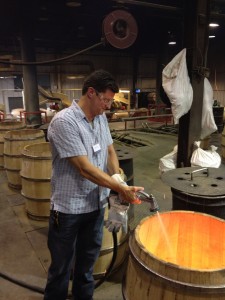
Maintaining proper temperature by dousing fire with water
We have been working over the last number of years to identify the different ways we can toast a barrel so it produces just the right balance of flavor and mouthfeel. This is a nuanced approach that involves sensory and chemical analysis to match up the proper balance of intensity and duration to produce the desired effects. Through our work with our cooperage partner, we have designed a wide array of toasting profiles to achieve this goal. Many of the senior winemakers in our organization have designed specific toasting profiles that we use extensively today.
In Missouri, I got to experience this precision toasting process first hand as I played “master cooper” for a couple hours and toasted my own barrel. Knowing how heat and time play a significant role in the flavor impacts of each barrel, the cooperage has designed a high-tech toasting floor where the individual temperature is monitored throughout the process. Like master chefs who coax the perfect flavors out of each food dish, these toasting masters pay strict attention to the temperature/time curve of every barrel they are toasting. They receive constant feedback regarding their accuracy. It’s truly an impressive process.
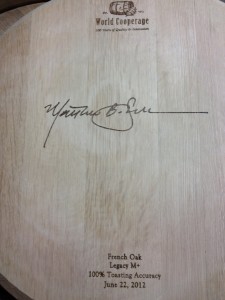
Toasting Accuracy
With all this going on, you might ask: How does a winemaker make any decisions and keep it all straight? We conduct large-scale barrel trials each year investigating the different toasts and their impact on the wine. We evaluate each trial with rigorous sensory analysis, using academically-accepted experimental design. Through this process, we have the chance to learn how each toast type compares in aroma and flavor contribution. Over time, I have started to learn how the different toasting profiles marry with the wines from our vineyards. We see, for example, that certain toasts work well with Russian River Pinot Noir, while not at all with Pinot from Monterey County. It’s really mind-blowing when you think of all the possibilities and outcomes to consider.
I can’t wait until my next visit, maybe I’ll get the chance to create a “Winemaker Matt” toast. Until then, I’ll keep applying the ones I have available and keep discovering how each one contributes to the overall character of our wines. Hopefully this has increased your understanding of oak and the barrel-aging process. Cheers!
